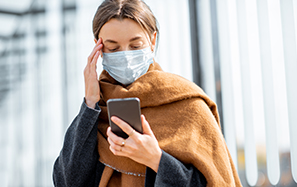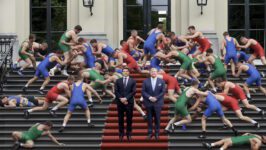What social geography adds to the containment of COVID-19 As a result of my Dutch TV performance last Saturday, I get two kinds of reactions. There are people who are (very) positive about what I publish and tell. And there are people (often with some kind of anger), that dismiss me for not being a […]
Lees volledig artikel: What social geography adds to the containment of COVID-19
What social geography adds to the containment of COVID-19
As a result of my Dutch TV performance last Saturday, I get two kinds of reactions.
There are people who are (very) positive about what I publish and tell. And there are people (often with some kind of anger), that dismiss me for not being a virologist or epidemiologist, so how I dare to investigate COVID-19’s behaviour, write about it and take a stand on it.
I do understand the latter reaction, but at the same time it indicates that there is no recognition of how different fields of expertise can cooperate to battle the challenges we face as a society.
I hope those people will read my explanation below. Not because I hope that they will think a bit more positive about me, but mainly because I hope that they will better understand what those challenges.
I’m not a doctor and I’m not a virologist. I don’t pretend to be. Of course I read a lot about the virus and how to fight it, but I do that as an interested citizen. Moreover, I have great respect for the commitment of all doctors and virologists and I really am the very last person who wants to work against these dedicated professionals. In fact, I try to help them. And the great thing is that my contacts with the virologists (and the RIVM) show that what I do is best appreciated. During the interview Ab Oosterhuis, a leading virologist in the Netherlands, even largely agreed with my conclusions and findings.
Why does my profession/specialism and experience fit in so well with solving the problems we face?
Because social geography reveals patterns that help the government, OMT and RIVM to choose the optimal strategy to reduce the rate of spread of the virus as quickly as possible.
There is something special about the spread of COVID-19, something that is different from the annual spread of the influenza virus. Differences we can identify through social geography research.
In normal influenza epidemics, the pattern of spread is not easy to determine. And that is because many people in the population have already built up immunity to all kinds of influenza strains in previous years. That’s why older people, among others, are less likely to get the flu. So suppose that in November 2017, 200 people were in a room and all of them could actually have been infected. If you don’t know who has already built up some form of immunity, you can’t really determine how that infection really happened.
Then you would have to test everyone present to understand and analyze that.
That is not the case with this COVID-19 virus. No one was immune during the outbreak. So in the case of the spread, it is – for the time being – irrelevant to determine whether someone was/is already immune. It’s, as it were -and unfortunately- as if the whole world has become some kind of laboratory.
Per country, but also per region and even per city, we see patterns of distribution and an approach by governments, which are partly different and partly similar. This provides insight into how the spread proceeds (e.g. via the super spread events) and what works or does not work to slow down the spread of the virus.
And let that just be the subject I studied; social geography (and demography and statistics). You study regional patterns and developments over time and you look at how that relates to other factors.
Historical geographical research, for example, has shown how important railway routes were/are for the patterns with which cities and regions developed. Both economically and where cities flourished. A geographer can investigate this without knowing how to drive a train or lay railroad tracks.
And the same goes for the analysis of the spread of the Corona virus.
There are interesting geographical patterns in the spread of the virus. In some places it goes many times faster than in others. In Lombardy, Spain, Brabant, New York, the process is very different from Naples, Groningen and San Francisco.
By researching and explaining this from my field, it can be very supportive for those who face the great challenge of slowing down the spread and bringing the reproduction factor below 1.
And in this geographical research I also use scientific literature from microbiologists, virologists and epidemiologists for my explanations. In my contacts with various international experts in the field (microbiologists and virologists and authors of interesting papers on the subject), I notice that they are particularly pleased with my work, because it is so complementary to theirs. And with that, their own findings are further substantiated.
Recognize that after this first phase of the global spread of the virus, in which the expertise of virologists and doctors is crucial, we have now entered another phase. This is a phase in which, on the one hand, it is about getting and keeping the virus under control, and on the other hand, it is about rebuilding our economy and society. Every expertise can play an important role in this. Or certain experiences of citizens who, shared with experts, can contribute to finding the right solutions.
You have just read: What social geography adds to the containment of COVID-19.







